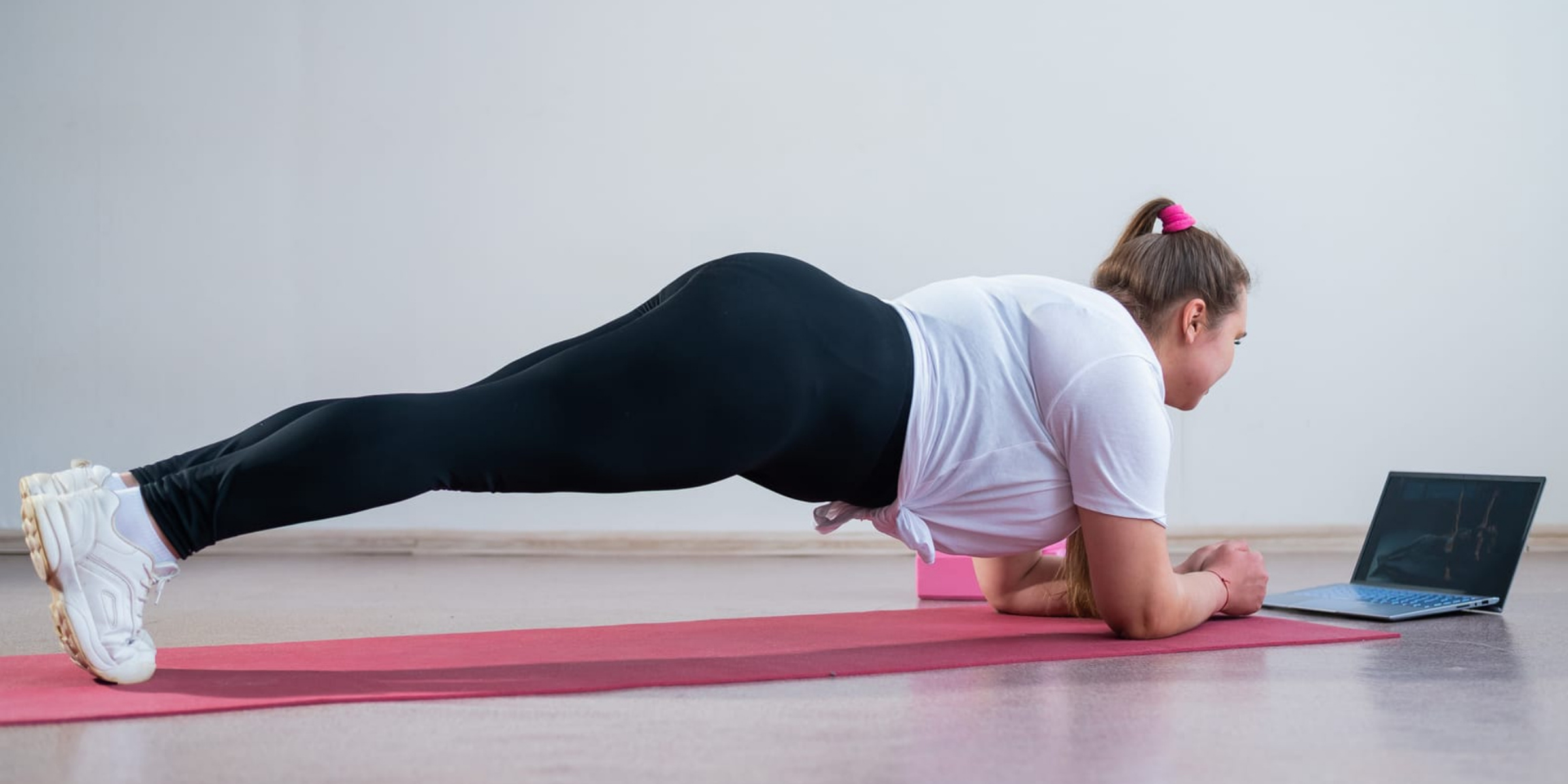Feeling a bit out of shape but still interested in giving yoga a try? The good news is, you definitely can! Yoga is a versatile practice that can be customized to meet your fitness level. Whether you’re a beginner or haven’t exercised in a while, yoga offers a wide range of benefits for all body types.
You can still do yoga if you’re out of shape. Yoga is a practice that can be modified to suit different fitness levels and abilities. It is a great way to improve flexibility, strength, and overall fitness. It is recommended to start with beginner or gentle yoga classes and gradually increase the intensity as your fitness level improves.
In this piece, we’ll explore how you can adapt poses, build strength and flexibility, overcome mental obstacles, and find the right class or instructor to start your yoga journey.
So, don’t let your current fitness level hold you back – it’s time to embrace yoga and uncover the liberation it can bring to your life.
Understanding the Benefits of Yoga for All Body Types
Yoga offers benefits to people of all body types, regardless of their fitness level. It is a practice that embraces and celebrates uniqueness, allowing individuals to adjust poses according to their needs. Whether you are a beginner or an experienced practitioner, yoga provides numerous advantages for both physical and mental well-being.
One of the primary benefits of regular yoga practice is improved flexibility. As you move through different poses, you will gradually notice an increase in muscle suppleness and range of motion. This newfound flexibility not only enhances your yoga practice but also makes everyday movements smoother and more fluid.
In addition to flexibility, yoga also helps in building strength. By holding poses and flowing through sequences, you engage and strengthen your muscles, leading to overall improved strength and stability. This is particularly advantageous if you are not in the best shape, as yoga allows you to gradually strengthen your body at your own pace.
Furthermore, yoga is well-known for its ability to reduce stress and promote relaxation. The combination of deep breathing, mindfulness, and physical movement helps calm the mind and release tension from the body. Regular practice can help you find a sense of peace and tranquility, even in the midst of a busy and demanding lifestyle.
Keep in mind that yoga is a practice that can be adapted to suit your individual needs and abilities. If certain poses feel challenging initially, do not be discouraged. With time and practice, you will gradually build strength and flexibility, and experience the many benefits that yoga has to offer. Embrace the freedom to adjust poses and listen to your body as you embark on your yoga journey.
Modifying Yoga Poses to Suit Your Fitness Level
When practicing yoga, it’s crucial to keep in mind that everyone has different abilities. Fortunately, yoga can be easily adjusted to meet your specific needs.
Whether you’re a beginner or have physical limitations, there are gentle alterations that can be made to make the poses more accessible.
Gradual progress and adjustments are essential for developing strength and flexibility over time, so don’t feel discouraged if you can’t immediately perform certain poses.
With patience and consistency, you will be able to steadily enhance your skills and enjoy the numerous benefits of yoga.
Adapting for Different Abilities
Adapting for Different Abilities
It is crucial to adjust your yoga practice for various abilities. Yoga is a versatile activity that can be enjoyed by individuals of all fitness levels and physical limitations. Making modifications to poses and adjusting the intensity of your practice can help make yoga accessible and beneficial to your specific needs.
Here are a few ways to adapt your yoga practice:
- Utilize props such as blocks, blankets, or straps to provide support for your body and enhance stability.
- Place emphasis on breath and alignment instead of pushing yourself towards advanced poses.
- Take breaks or modify poses to prevent strain or discomfort.
- Gradually increase the duration and intensity of your practice as your body becomes stronger and more flexible.
- Pay attention to your body’s limitations and practice self-care and self-compassion.
Gentle Modifications for Beginners
Gentle Modifications for Beginners
Enhancing your yoga practice and ensuring a safe and enjoyable experience can be achieved through gentle modifications, especially for beginners. If you are expecting, there are specific adaptations you can make to accommodate your changing body.
Steer clear of poses that compress the abdomen, such as deep twists or inversions. Instead, focus on mild stretches, breathing exercises, and meditation.
Incorporating yoga into a busy schedule may pose a challenge, but it is certainly feasible. Consider commencing with short, daily practices rather than longer sessions. Discover moments throughout your day where you can squeeze in a few poses or breathing exercises.
Gradual Progress and Modifications
Taking things slowly and making gradual adjustments is crucial for progressing in your yoga practice. It’s important to keep in mind that yoga is a journey, not a competition. Here are some ways you can modify postures and advance at your own pace:
- Utilize props such as blocks and straps to assist you in achieving proper alignment.
- Take breaks and listen to your body when you need to rest.
- Concentrate on your breath and utilize it as a guide throughout your practice.
- Experiment with different variations of poses to discover what works best for you.
- Exercise patience and kindness towards yourself, recognizing that progress takes time.
By modifying postures and embracing a gradual progression, you can establish a safe and sustainable yoga practice that respects your body and allows for freedom of movement.
Building Strength and Flexibility Through Yoga Practice
If you’re new to yoga or just starting out on your fitness journey, yoga for beginners can be a fantastic way to enhance your strength and flexibility.
It’s crucial to remember that each person’s body is distinct, and adjustments for beginners are a customary part of the practice.
Yoga for Beginners
Yoga is a wonderful practice that can be enjoyed by anyone, regardless of fitness level. Whether you’re just starting out or have been out of shape for a while, yoga offers adaptability and accessibility. It can be a valuable addition to your fitness routine, whether your goal is weight loss or overall health improvement.
Below are some reasons why you should give it a try:
- Yoga for shedding pounds: Yoga aids in calorie burning, lean muscle building, and a boosted metabolism. It also encourages mindfulness, which can guide you towards healthier choices in terms of food and exercise.
- Yoga for older adults: Yoga can be tailored to suit the needs of seniors. It enhances balance, flexibility, and joint health, making it an ideal exercise option for older individuals.
- Enhanced flexibility: Regular yoga practice can improve flexibility, making everyday movements easier and reducing the risk of injury.
- Stress relief: Yoga incorporates breathing exercises and meditation, which can lower stress levels and induce relaxation.
- Connection between mind and body: Yoga focuses on the interconnectedness of the mind, body, and breath. It helps you become more attuned to your body’s needs and enhances overall well-being.
Modifications for Beginners?
To modify poses in yoga, it is beneficial to incorporate props such as blocks or straps. These props can assist in gradually adapting to the movements, while simultaneously enhancing strength and flexibility.
It is crucial to remember that yoga is accessible to individuals of all fitness levels and body shapes. If you are seeking modifications for advanced poses or utilizing yoga for weight loss, there are numerous alternatives to explore.
Advanced poses can be approached by using props to provide support and gradually progress towards the full expression of the pose. In the context of weight loss, integrating dynamic and challenging poses into your practice can elevate the heart rate and promote calorie burn.
It is important to acknowledge that yoga is a personal journey, and modifications allow for the acknowledgement and respect of one’s current physical capabilities, while still reaping the benefits of the practice.
Overcoming Mental Barriers and Embracing Yoga as a Beginner
Embracing yoga as a beginner can help overcome mental barriers and enhance overall well-being. It’s completely normal to feel hesitant or fearful when trying something new, especially if you’re out of shape. However, keep in mind that yoga is inclusive for all, regardless of your current fitness level.
Here are some tips to help you conquer fear and cultivate confidence as you embark on your yoga journey:
- Adopt the mindset of a beginner: Allow yourself to embrace the beginner’s mentality and let go of any preconceived notions or judgments. Remember, everyone starts somewhere, and progress comes with time and practice.
- Begin with gentle yoga: Start your yoga practice with gentle yoga classes or beginner-friendly videos. These classes primarily focus on fundamental poses and offer modifications for individuals with varying fitness levels.
- Tune in to your body: Pay close attention to the signals your body sends and take breaks whenever necessary. Yoga is about honoring and respecting your body, so avoid pushing yourself beyond your limits.
- Cultivate self-compassion: Be gentle and kind to yourself, letting go of the need for perfection. Instead, focus on the progress you make each day, no matter how small.
- Surround yourself with a supportive community: Join a welcoming yoga community or find a yoga buddy who can provide encouragement and understanding. Having individuals who can support your journey can significantly boost your confidence.
Finding the Right Yoga Class or Instructor for Your Needs
When searching for the perfect yoga class or instructor that suits your needs, it’s crucial to consider factors such as experience level, teaching style, and class format.
Discovering the right yoga class and instructor can significantly enhance your practice and assist you in achieving your goals.
Start by determining your proficiency level. If you’re a novice, seek out classes specifically tailored for beginners, where the instructor can expertly guide you through the fundamentals and offer modifications for various poses. Conversely, if you possess advanced skills, search for classes that challenge you and allow you to delve deeper into your practice.
Take into account the teaching style that resonates with you. Some instructors may prioritize alignment and form, while others may emphasize a more fluid and dynamic approach.
Finally, consider the class format that aligns with your preferences. Do you crave a vigorous vinyasa class that gets your heart pumping, or a gentle restorative class that promotes relaxation and rejuvenation?
Always remember, there is no universal approach to yoga, so take the necessary time to find a class and instructor that align with your unique needs and desires.
Tips and Strategies for Staying Motivated on Your Yoga Journey
Stay committed to your yoga journey by setting achievable goals, tracking your progress, and finding inspiration from fellow yogis. Staying motivated is a vital aspect of any fitness journey, and yoga is no exception. Here are some tips and strategies to help you stay on track and continue to thrive on your yoga journey.
- Find a supportive community: Surround yourself with like-minded individuals who share your passion for yoga. Join a yoga studio or online community where you can connect with fellow yogis, share experiences, and find support.
- Set achievable goals: Set realistic goals that align with your current fitness level and schedule. Whether it’s mastering a challenging pose or practicing yoga three times a week, setting attainable goals will help you stay motivated and track your progress.
- Track your progress: Keep a journal or utilize a fitness app to monitor your progress. This will enable you to see how far you’ve come and provide a sense of accomplishment, motivating you to continue your yoga practice.
- Mix up your routine: Keep your yoga practice interesting by exploring different styles, poses, or attending workshops. This will prevent monotony and help you stay motivated to continue your yoga journey.
- Find inspiration: Seek motivation from experienced yogis, whether it’s through literature, videos, or attending workshops. Observing others excel in their practice can be a powerful motivator to keep pushing yourself and reaching new heights in your own practice.
Conclusion
To sum up, keep in mind that yoga is for everyone, regardless of your current level of fitness or body type. It offers a plethora of advantages, such as enhanced strength, flexibility, and mental well-being.
By adapting poses to suit your individual needs and finding the right class or instructor, you can incorporate yoga into your fitness journey.
So, why wait? Begin embracing the power of yoga today and uncover the transformative effects it can have on your mind, body, and soul.
Isn’t it time to take that initial step towards a healthier and happier version of yourself?




